2-bromohexadecanoic acid

2-bromohexadecanoic acid structure
|
Common Name | 2-bromohexadecanoic acid | ||
|---|---|---|---|---|
| CAS Number | 18263-25-7 | Molecular Weight | 335.32 | |
| Density | 1.1±0.1 g/cm3 | Boiling Point | 403.4±18.0 °C at 760 mmHg | |
| Molecular Formula | C16H31BrO2 | Melting Point | 52-54 °C | |
| MSDS | Chinese USA | Flash Point | 197.8±21.2 °C | |
| Symbol |

GHS07 |
Signal Word | Warning | |
Use of 2-bromohexadecanoic acid2-Bromohexadecanoic acid (2-Bromopalmitic acid) can be converted to 2-bromopalmitate (2-BP). 2-BP is a palmitoylation inhibitor targeting DHHC (Asp-His-His-Cys) protein palmitoyltransferase. 2-BP inhibits palmitoylation of GSDME-C during pyroptosis and inhibits BAK/BAX-Caspase 3-GSDME pathway-mediated pyroptosis[1]. |
| Name | 2-bromohexadecanoic acid |
|---|---|
| Synonym | More Synonyms |
| Description | 2-Bromohexadecanoic acid (2-Bromopalmitic acid) can be converted to 2-bromopalmitate (2-BP). 2-BP is a palmitoylation inhibitor targeting DHHC (Asp-His-His-Cys) protein palmitoyltransferase. 2-BP inhibits palmitoylation of GSDME-C during pyroptosis and inhibits BAK/BAX-Caspase 3-GSDME pathway-mediated pyroptosis[1]. |
|---|---|
| Related Catalog | |
| References |
| Density | 1.1±0.1 g/cm3 |
|---|---|
| Boiling Point | 403.4±18.0 °C at 760 mmHg |
| Melting Point | 52-54 °C |
| Molecular Formula | C16H31BrO2 |
| Molecular Weight | 335.32 |
| Flash Point | 197.8±21.2 °C |
| Exact Mass | 334.150726 |
| PSA | 37.30000 |
| LogP | 7.76 |
| Vapour Pressure | 0.0±2.0 mmHg at 25°C |
| Index of Refraction | 1.480 |
| Symbol |

GHS07 |
|---|---|
| Signal Word | Warning |
| Hazard Statements | H315-H319-H335 |
| Precautionary Statements | P261-P305 + P351 + P338 |
| Personal Protective Equipment | dust mask type N95 (US);Eyeshields;Gloves |
| Hazard Codes | Xi: Irritant; |
| Risk Phrases | R36/37/38 |
| Safety Phrases | S26-S36 |
| RIDADR | NONH for all modes of transport |
| WGK Germany | 3 |
| HS Code | 2915900090 |
|
~% 
2-bromohexadeca... CAS#:18263-25-7 |
| Literature: Journal of the Chemical Society, , vol. 87, p. 1901 Chemische Berichte, , vol. 25, p. 486 Chemische Berichte, , vol. 24, p. 939 |
|
~% 
2-bromohexadeca... CAS#:18263-25-7 |
| Literature: Yakugaku Zasshi, , vol. 61, p. 406;dtsch.Ref.S.127 Chem.Abstr., , p. 9356 |
| Precursor 2 | |
|---|---|
| DownStream 10 | |
| HS Code | 2915900090 |
|---|---|
| Summary | 2915900090 other saturated acyclic monocarboxylic acids and their anhydrides, halides, peroxides and peroxyacids; their halogenated, sulphonated, nitrated or nitrosated derivatives VAT:17.0% Tax rebate rate:9.0% Supervision conditions:AB(certificate of inspection for goods inward,certificate of inspection for goods outward) MFN tariff:5.5% General tariff:30.0% |
|
Local palmitoylation cycles define activity-regulated postsynaptic subdomains.
J. Cell Biol. 202(1) , 145-61, (2013) Distinct PSD-95 clusters are primary landmarks of postsynaptic densities (PSDs), which are specialized membrane regions for synapses. However, the mechanism that defines the locations of PSD-95 cluste... |
|
|
Estrogen receptor-alpha 36 mediates the anti-apoptotic effect of estradiol in triple negative breast cancer cells via a membrane-associated mechanism.
Biochim. Biophys. Acta 1843(11) , 2796-806, (2014) 17β-Estradiol can promote the growth and development of several estrogen receptor (ER)-negative breast cancers. The effects are rapid and non-genomic, suggesting that a membrane-associated ER is invol... |
|
|
Identification of G protein alpha subunit-palmitoylating enzyme.
Mol. Cell. Biol. 29(2) , 435-47, (2009) The heterotrimeric G protein alpha subunit (Galpha) is targeted to the cytoplasmic face of the plasma membrane through reversible lipid palmitoylation and relays signals from G-protein-coupled recepto... |
| Hexadecanoic acid, 2-bromo- |
| 2-bromopalmitate |
| 2-Bromopalmitic acid |
| UNII:7EI4G5X28Z |
| 2-bromopalmitate,(+-)-isomer |
| 2-bromo-hexadecanoic acid |
| Hexadecanoic acid,2-bromo |
| EINECS 242-137-0 |
| MFCD00004215 |
| bromopalmitic acid |
| 2-Bromohexadecanoic acid |
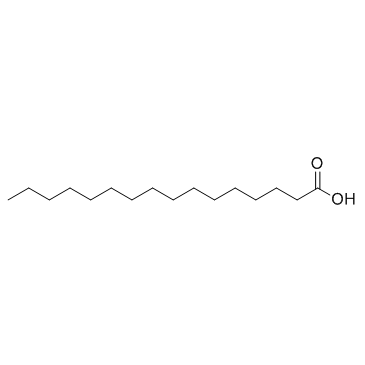
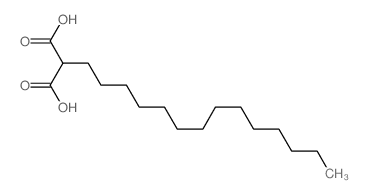
![(2S)-2-[[(2S)-2-aminohexadecanoyl]amino]-2-[(3S,4R,5R)-5-(2,4-dioxopyrimidin-1-yl)-3,4-dihydroxyoxolan-2-yl]acetic acid structure](https://image.chemsrc.com/caspic/486/112139-25-0.png) CAS#:112139-25-0
CAS#:112139-25-0![(2S)-2-[[(2R)-2-aminohexadecanoyl]amino]-2-[(3S,4R,5R)-5-(2,4-dioxopyrimidin-1-yl)-3,4-dihydroxyoxolan-2-yl]acetic acid structure](https://image.chemsrc.com/caspic/034/112139-24-9.png) CAS#:112139-24-9
CAS#:112139-24-9 CAS#:14980-93-9
CAS#:14980-93-9 CAS#:19117-92-1
CAS#:19117-92-1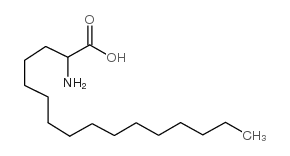 CAS#:7769-79-1
CAS#:7769-79-1 CAS#:764-67-0
CAS#:764-67-0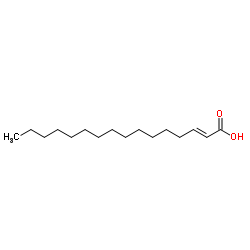 CAS#:629-56-1
CAS#:629-56-1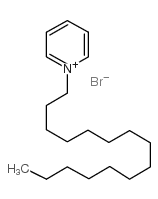 CAS#:53171-29-2
CAS#:53171-29-2 CAS#:2765-11-9
CAS#:2765-11-9
